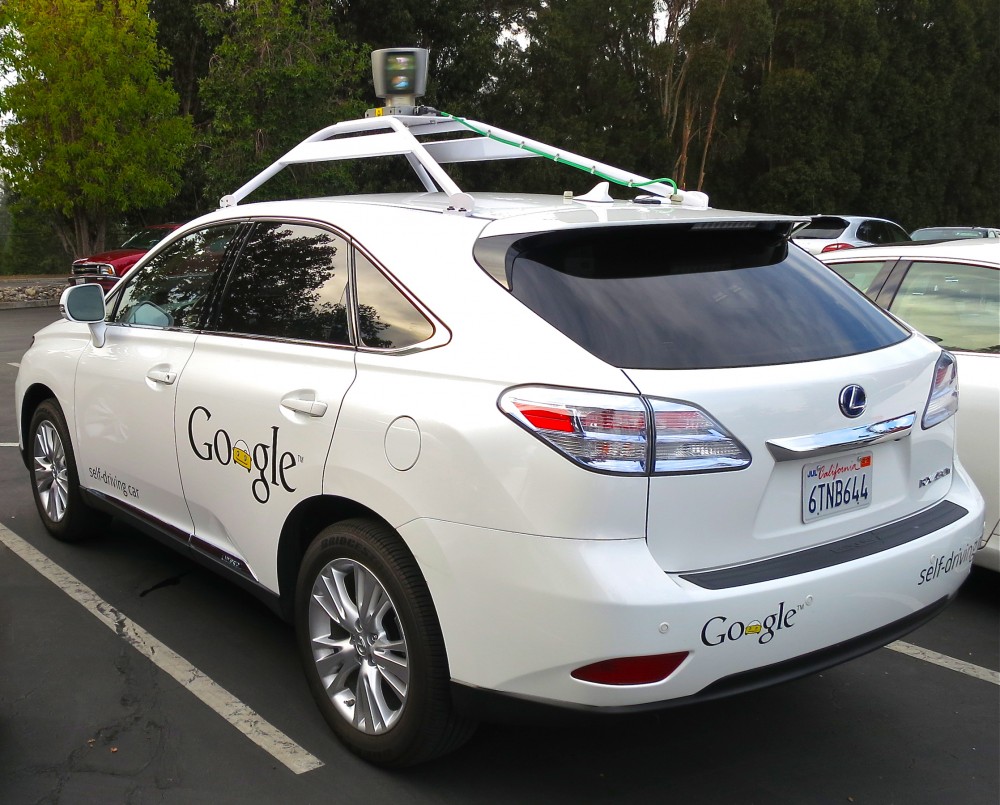Driverless Cars Aim to Change Everything
According to data from the Federal Reserve Bank of St. Louis, Americans drove more than 3 trillion miles last year. At an average speed of 40mph, that’s roughly 23,000 years of human life spent each day doing little more than sitting and focusing on pavement.

According to data from the Federal Reserve Bank of St. Louis, Americans drove more than 3 trillion miles last year. At an average speed of 40mph, that’s roughly 23,000 years of human life spent each day doing little more than sitting and focusing on pavement. What’s worse, car accidents also kill more than 30,000 people in the United States every year (Insurance Institute for Highway Safety).
How can we help people reclaim their time and stay safer on the road? Replace them with better drivers, of course.

An American Cornerstone
Nothing has shaped American construction and consumerism quite like the car. It’s encouraged spacious design in everything from suburbs to shopping malls and has created hundreds of secondary industries. America has been so accommodative to automobiles that we are now dependent on them. In 2013, 85.8 percent of Americans used automobiles to get to work (U.S. Census Bureau). Even if someone can avoid owning a car, they’ll still need to rent one or use a taxi from time to time.
However, just because America needs cars, it doesn’t necessarily need drivers. Various companies are designing self-driving vehicles, believing that a fully automated car could improve the quality of the American commute and drastically reduce vehicle accidents.
While it’s unclear when (or if) companies will be able to deliver an autonomous car, it’s fun to consider what a world of self-driving cars might be like.
Vehicle Impact
If a practical self-driving car is ever mass produced, the first major change would be to ride services. Given the opportunity, taxi companies would rush to replace their drivers with autonomous cars. The disappearance of drivers would cut costs of taxi operations and drastically reduce fares. If taxi services become cheap and convenient enough, households could even reduce or eliminate car ownership. Why deal with the expense of owning a car when you only drive it a couple times a day?
If many Americans gave up car ownership, several changes would quickly follow. Large parking lots, for instance, would be rendered pointless since driverless cars would drop off passengers and have no need to idle. Though this may seem insignificant, reclaiming parking space would fundamentally change how we design our cities, houses and businesses.
A road full of autonomous cars would also change the quality of driving. Computerized vehicles could coordinate their movements with each other, drastically improving their efficiency. The result would be a faster commute that allows people to simultaneously socialize, read or work while on the road. Additionally, computers cannot become drowsy, distracted, intoxicated or physically impaired; they always obey rules and drive safely.
Unfortunately, the transition to a driverless world would not be painless. Much like taxi drivers, many gas station and auto shop workers would lose business to centralized garages used for rapid (or automatic) repairs and refueling. Similarly, the auto industry would need to consolidate due to a drop in overall car sales, while the multibillion auto insurance and auto loan industries would shrink greatly.
Real Possibilities
Several car companies believe they will be able to begin production on a driverless car in the coming years; however, issues with regulation, safety, public adoption, quality and costs of self-driving systems still remain uncertain.
A world of self-driving cars may seem bizarre, but automation is nothing new. Humans have been unloading our repetitive tasks onto computers for decades—this is just the next step. In the end, it won’t be a question of whether we can make cars that drive themselves; it’s whether we’ll be ready to trust them at 70mph.
This article was written by Advicent Solutions, an entity unrelated to Fingerlakes Wealth Management. The information contained in this article is not intended to be tax, investment, or legal advice, and it may not be relied on for the purpose of avoiding any tax penalties. Fingerlakes Wealth Management does not provide tax or legal advice. You are encouraged to consult with your tax advisor or attorney regarding specific tax issues. © 2016 Advicent Solutions. All rights reserved.
News and insights for your financial future.
Feel good about
your financial future.
Tailored guidance to help you make smart financial choices
Comprehensive planning and holistic wealth management
Advice that integrates with your values at every stage of life



